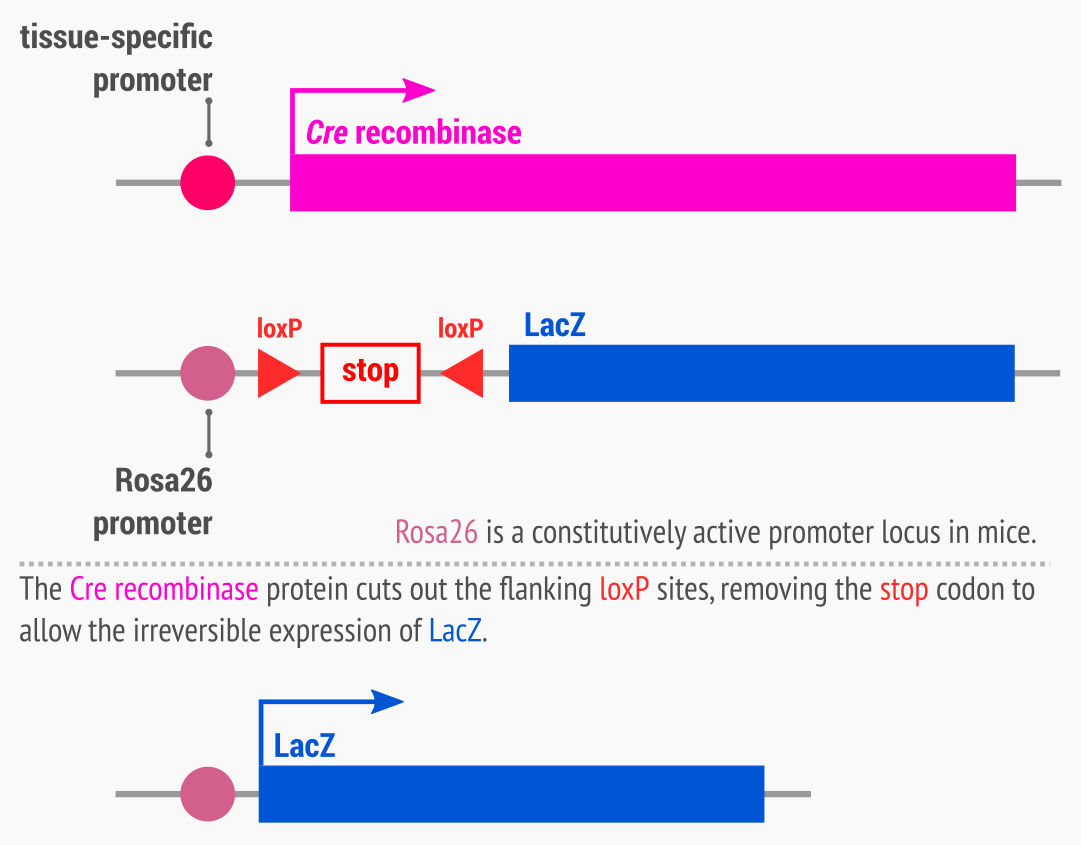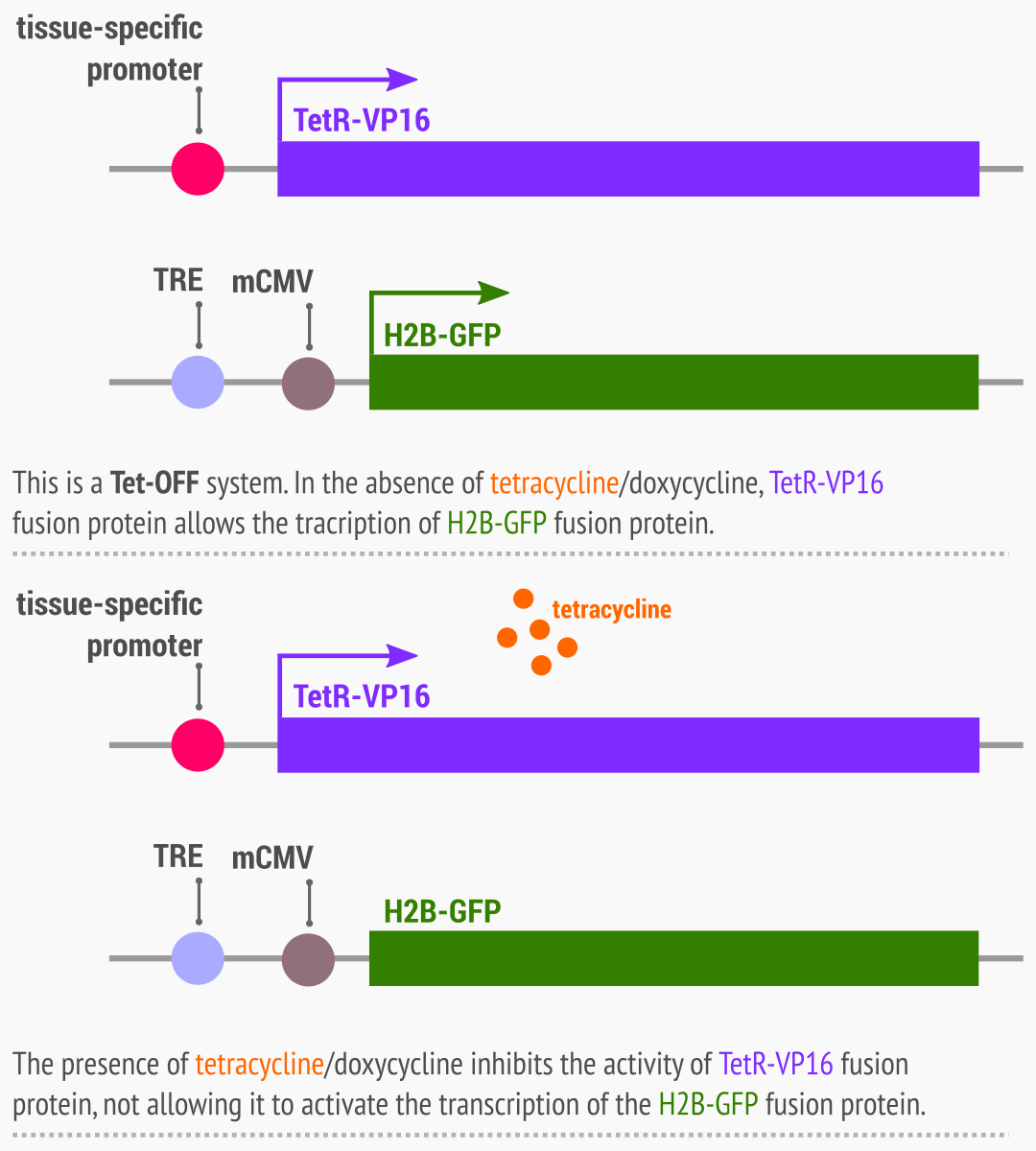I read about the Cre-Lox a.k.a Cre recombinase technology long ago, but it was not very well intuitive for me to understand it until I was exposed to the lineage tracing in the Cell Biology class at the URMC. That’s it. Before this, I knew that Cre-Lox is a tool, but I did not what question Cre-Lox system can provide answers to.
In that class, we were asked with this question: so you know this one cell is a stem cell and will give rise to progenies, how can you track this one particular stem cell and its progenies? You need to track it, right? So, that’s the premise of lineage tracing. Almost all lineage tracing experiments are done in mice. You don’t do this on human.
 Schematic diagram of a Cre-recombinase system. CC-BY 4.0
Schematic diagram of a Cre-recombinase system. CC-BY 4.0
- The tissue-specific promoter could be a promoter specific to a stem cell protein.
- Rosa26 is a constitutively active locus promoter in mice.
- loxP sites are the places where Cre are going to cut.
- Bear in mind that this system is irreversible once loxP sites are excised.
To make this system even cooler, sometimes the Cre recombinase is expressed as a Cre-GFP fusion protein so you can track the parental stem cell to differentiate it (green; GFP) between progenies (blue; LacZ).
 TetOFF system, or, “with Tetracycline, it gets turned off”. CC-BY 4.0
TetOFF system, or, “with Tetracycline, it gets turned off”. CC-BY 4.0
The Tet-OFF system is somewhat same, but this system is reversible. Just give the mice some tetracycline/doxycycline diet and then you have the system being turned off.
- Doxycycline is tetracycline’s analog, albeit more stable.
- mCMV is the murine CMV promoter.
- TetR-VP16 is a tetracycline repressor protein (from E. coli) fused to the VP16 activation domain (from HSV). This fusion protein is also known as the tTA (tetracycline transactivator).
- H2B-GFP is a constitutively active protein histone H2B fused to the GFP protein.
With this Tet-OFF system, the stem cell will forever retain green color because the TetR-VP16 is always active after tet/dox is administered. Why? Because, almost always, stem cells do not divide as fast and maintain a self-renewal quiescent state. Hence, the H2B-GFP is retained much longer. And it is almost always that a stem cell gives rise to transit amplifying cells. These cells then divide like crazy and later turn into terminally-differentiated cells until it runs out of gas.
That’s all for now. All images were made in Inkscape. Ping me if you need those.